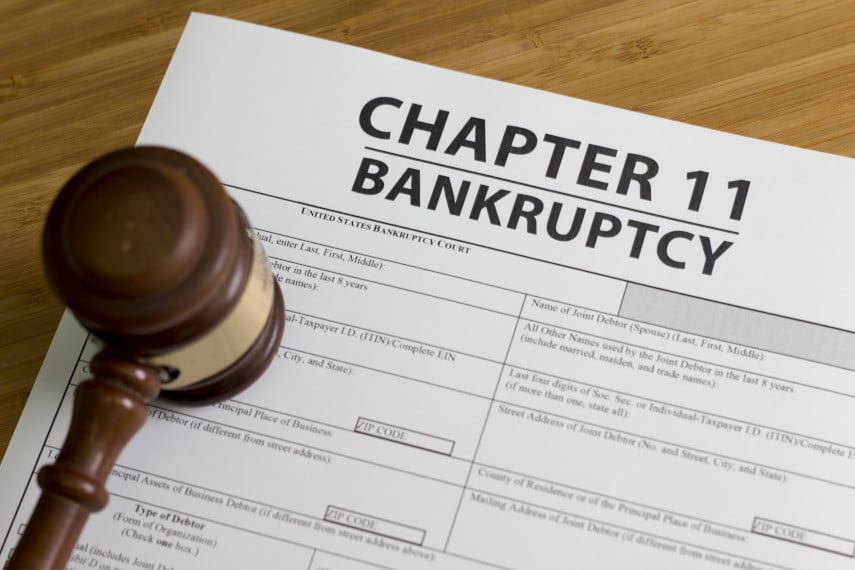6 Indicators of a Potential Recession
It seems that in the media today there are more and more mentions of the dreaded R-word: recession With growing economic uncertainty, the threat of potential recession seems to be growing as...
Economy

The 2008 financial crisis started out slowly, before it accelerated with a bang. And no event did more to panic markets and investors than the collapse of Lehman Brothers in September 2008. Having been conditioned by the Federal Reserve’s rescue of Bear Stearns, markets expected Lehman to garner similar treatment. When it didn’t, that sent a major wake-up call and caused markets to panic.
Fourteen years later, we could be seeing a similar situation unfold with respect to Credit Suisse. The embattled Swiss bank has been the subject of numerous rumors recently surrounding its financial health. Its stock has been battered, its bonds have taken a beating, and its credit default swaps hit record highs.
The company’s executives have tried to reassure investors that the company is in sound financial shape, but that’s to be expected. The real proof will be how the company responds to a worsening financial and economic landscape.
The real fear about Credit Suisse failing isn’t so much about one of the world’s biggest banks collapsing. It’s about the fallout that would ensue and the effect that such a failure would have on the bank’s various counterparties.
Credit Suisse’s counterparties include other major banks, and a failure of Credit Suisse could have a contagious and cascading effect on other large banks, causing them to fail as well. In essence, Credit Suisse could be the first domino to fall, taking down others with it.
Credit Suisse, through its New York branch, is also one of the Federal Reserve’s primary dealers, one of the major financial institutions expected to bid at Treasury auctions. Lehman Brothers was too, which is why it was so shocking that Lehman was allowed to fail. Would Credit Suisse be allowed to fail too?
One question that many are asking is, if Credit Suisse were to fail, who would be responsible for bailing it out? Would it fall on the shoulders of the Swiss National Bank or the Swiss federal government? Would the Fed attempt a bailout through Credit Suisse’s New York operations? Or would there be an international consortium of central banks operating to shore up the bank’s finances?
A failure of Credit Suisse would be almost unprecedented, given the fact that Credit Suisse is both larger than Lehman and has a broader international reach. It would bring up many interesting questions, and would likely require some sort of coordinated international response. And if Lehman’s failure ended up being the trigger that catapulted the 2008 financial crisis into overdrive, a Credit Suisse failure could likely do the same for 2022 or 2023.
As much as central banks around the world love to tout how their enhanced regulations and regular stress tests have left the banking system in a better position than it was in 2008, that doesn’t exactly mean that the banking system is any less fragile now than it was back then.
In the intervening 14 years we’ve seen a fundamental shift in how markets view central banks, how central banks view their role in the economy, and in how investors expect central banks to act. Despite the characterization of legislation like Dodd-Frank that was supposed to end bailouts, it seems as though the bailout regime has become even more firmly entrenched since then.
The only change is that, rather than bailing out individual firms as was done in days past, now central banks aim to bail out entire economies. The minute there is any sign of weakness in financial markets, central banks jump right in with newly created money to purchase assets, set up lending facilities, and ensure that firms and markets don’t fail.
What they fail to appreciate is that failure is part of a market economy. If a firm fails, it’s because the firm either hasn’t met consumer needs or has been so horribly mismanaged that it shouldn’t be privileged to continue using up resources.
By keeping failing firms in business, central banks are rewarding bad behavior and mismanagement, which only ensures more of the same. Rather than maintaining financial stability, central banks who engage in these types of bailouts are sacrificing long-term market stability for the illusion of short-term market stability.
No one wants to see banks fail, and no one wants to see markets collapse. But between the massive amounts of monetary stimulus that have flooded the financial system over the last 14 years, the massive amounts of debt that continue to build up, and the continued bailouts of firms that should have gone out of business years ago, it’s only a matter of time before the massive bubble that has been created finally bursts.
Credit Suisse may be only the canary in the coal mine, warning us of worse to come. And with such big names showing signs of weakness, it’s understandable that many fear that the next recession could be far more devastating than 2008.
That’s why so many people are worried about their financial well-being. Inflation is already taking a big bite out of many people’s savings, but a 2008-style recession would be the icing on the cake.
Many people remember how markets lost more than 50% of their value in 2008, with many investors seeing years or decades of investment gains wiped out. No one wants to see a repeat of that, so the search for save havens is underway.
Gold is one safe haven asset that is seeing renewed interest, as many people remember how well gold performed in 2008 and beyond. While markets were losing over half of their value, gold gained 25% and then went on to set new record highs. If gold performs the same way during the next recession as it did during 2008, those who protected their wealth with gold could end up very pleased at their foresight.
Gold has served as a safe haven asset and an inflation hedge for centuries. When paper money is inflated to oblivion, when companies go bankrupt and take their stocks and bonds down with them, and when the future seems bleak and uncertain, gold continues to shine. Gold’s ability to maintain its value and purchasing power through thick and thin has helped it to endure as a safe haven during tough times.
With a gold IRA you can invest in physical gold coins and bars while still enjoying all the same tax advantages of an IRA retirement account. And if you have existing retirement assets in a 401(k), IRA, TSP, or similar account, you can roll over or transfer those assets into a gold IRA tax-free, allowing you to protect whatever assets you already have with physical gold.
The key, however, is to protect your assets before the crash comes. No one knows when that will be, or how severe things might get. But don’t wait until it’s too late to protect your hard-earned retirement savings. Call Goldco today to learn more about how you can safeguard your savings with gold.

